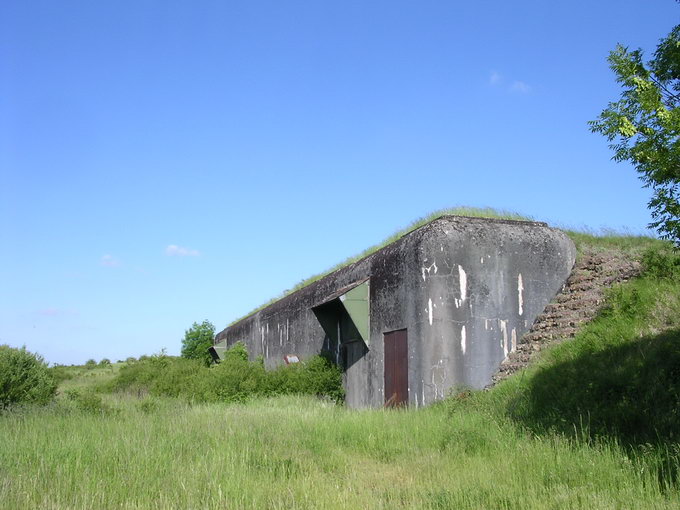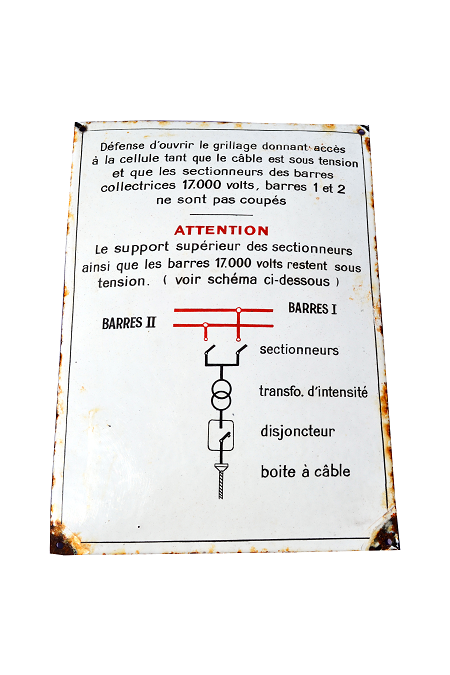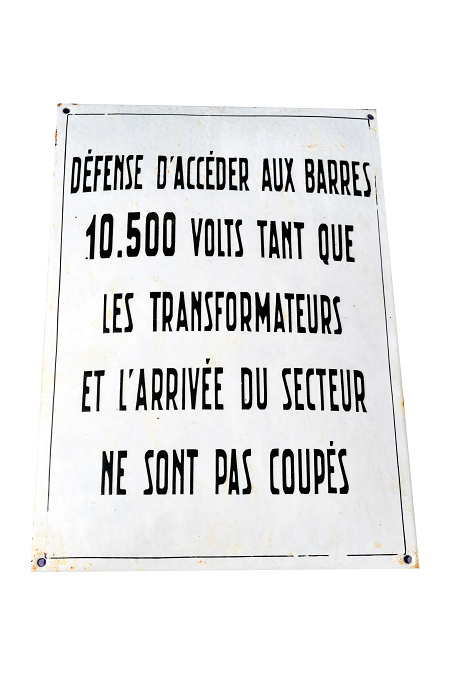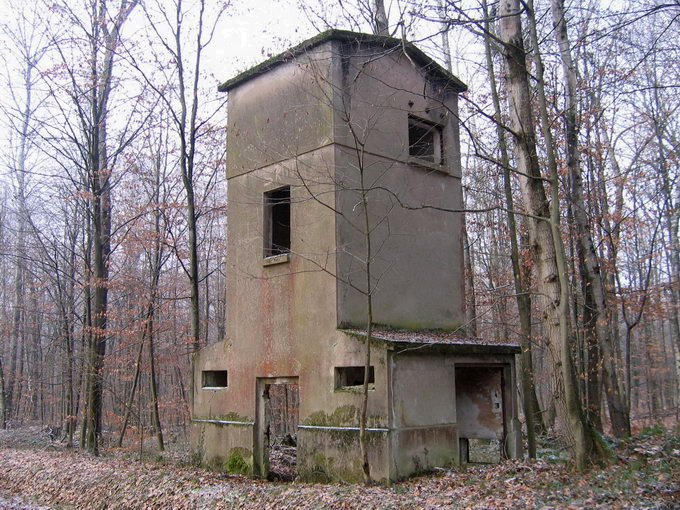
The Electrical transformer bunker at Xivry Circourt. This facility served the forts of the fortified sector of Crusnes.
The Maginot Line was operated entirely by electricity. To minimise the number of personnel required to operate the fortresses and directly reduce the cost of construction, the use of electrically-powered equipment was at the forefront of the design. This said, everything was designed with a minimum of dual redundancy.
This allowed for effective operation under every conceivable circumstance. Whilst operating when not in active combat, the forts enjoyed an external electrical supply. When operating in offensive mode (i.e. operating the guns) then each work was required to run entirely under its own (internally generated) supply. Enamel sign from the electrical transformer bunker of Xivry Circourt. This sign informed the operatives on site of how the breakers worked.
Enamel sign from the electrical transformer bunker of Xivry Circourt. This sign informed the operatives on site of how the breakers worked.
Away from the major population centres and their immediate outskirts, France in the interwar period was not blessed with the most modern of electrical grids. This contrasted greatly with the areas which had been between 1871 and 1918, annexed to what had now become Germany where a great deal of investment had been made in connecting even the smallest hamlets to a wider electrical grid. In areas which had remained within metropolitan France, the construction of the Maginot Line witnessed a major upgrade in the French electrical grid system, over and above that being rolled out across the rest of the country.
 Enamel sign from the electrical transformer bunker of Xivry Circourt. This was a high voltage warning sign.
Enamel sign from the electrical transformer bunker of Xivry Circourt. This was a high voltage warning sign.
 Enamel sign from the electrical transformer bunker of Xivry Circourt. This sign informed the operatives on site of how the breakers worked.
Enamel sign from the electrical transformer bunker of Xivry Circourt. This sign informed the operatives on site of how the breakers worked.Away from the major population centres and their immediate outskirts, France in the interwar period was not blessed with the most modern of electrical grids. This contrasted greatly with the areas which had been between 1871 and 1918, annexed to what had now become Germany where a great deal of investment had been made in connecting even the smallest hamlets to a wider electrical grid. In areas which had remained within metropolitan France, the construction of the Maginot Line witnessed a major upgrade in the French electrical grid system, over and above that being rolled out across the rest of the country.
 Enamel sign from the electrical transformer bunker of Xivry Circourt. This was a high voltage warning sign.
Enamel sign from the electrical transformer bunker of Xivry Circourt. This was a high voltage warning sign.This involved the addition of power generation facilities, along with pylons radiating over the contryside, providing the various links. From this grid, the French military engineers would go on to construct their own grid system taking the civilian supply and creating their own dedicated infrastructure.


The external transformer station of the Gros Ouvrage Schoenenbourg. The fort was supplied by the nearby civilian power station of Haguenau. The buried high voltage supply passed through this building immediately
before entering the fortress via the nearby men's entrance block (Bloc 8).
Near the point of separation, the military engineers built their own transformer stations which, depending on their location, could also involve the construction of an additional bunker to protect the switchgear. From these electrical supply hubs, the power was transported by overhead pylons until it neared the forts, where it would be transferred to a subterranean supply for protection. The enamel signs shown here were recovered from one such transformer bunker and provide a warning to the operatives of the voltages being
processed on site. The signs were removed during the conversion of the site to modern civilian use with the permission of the property owner.
